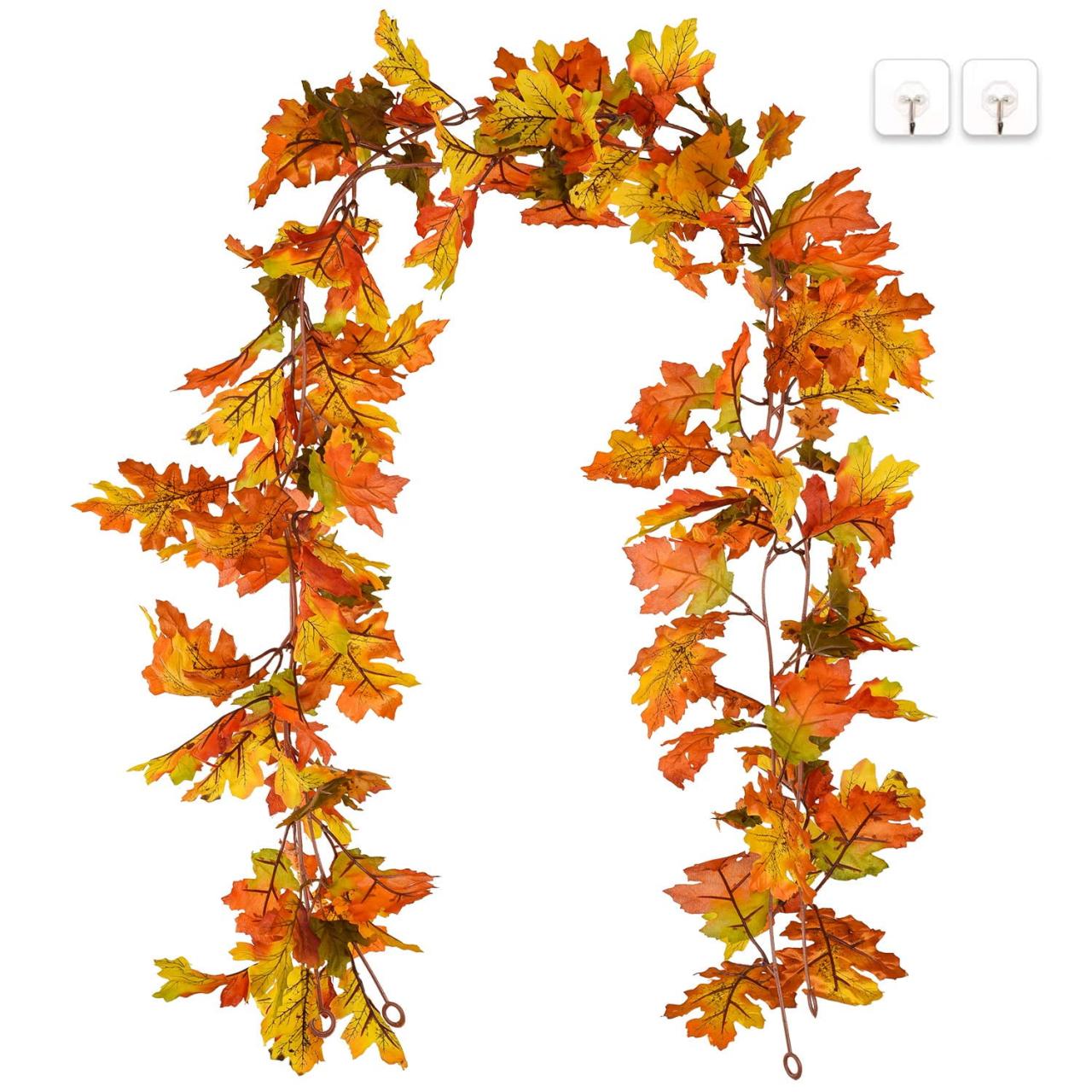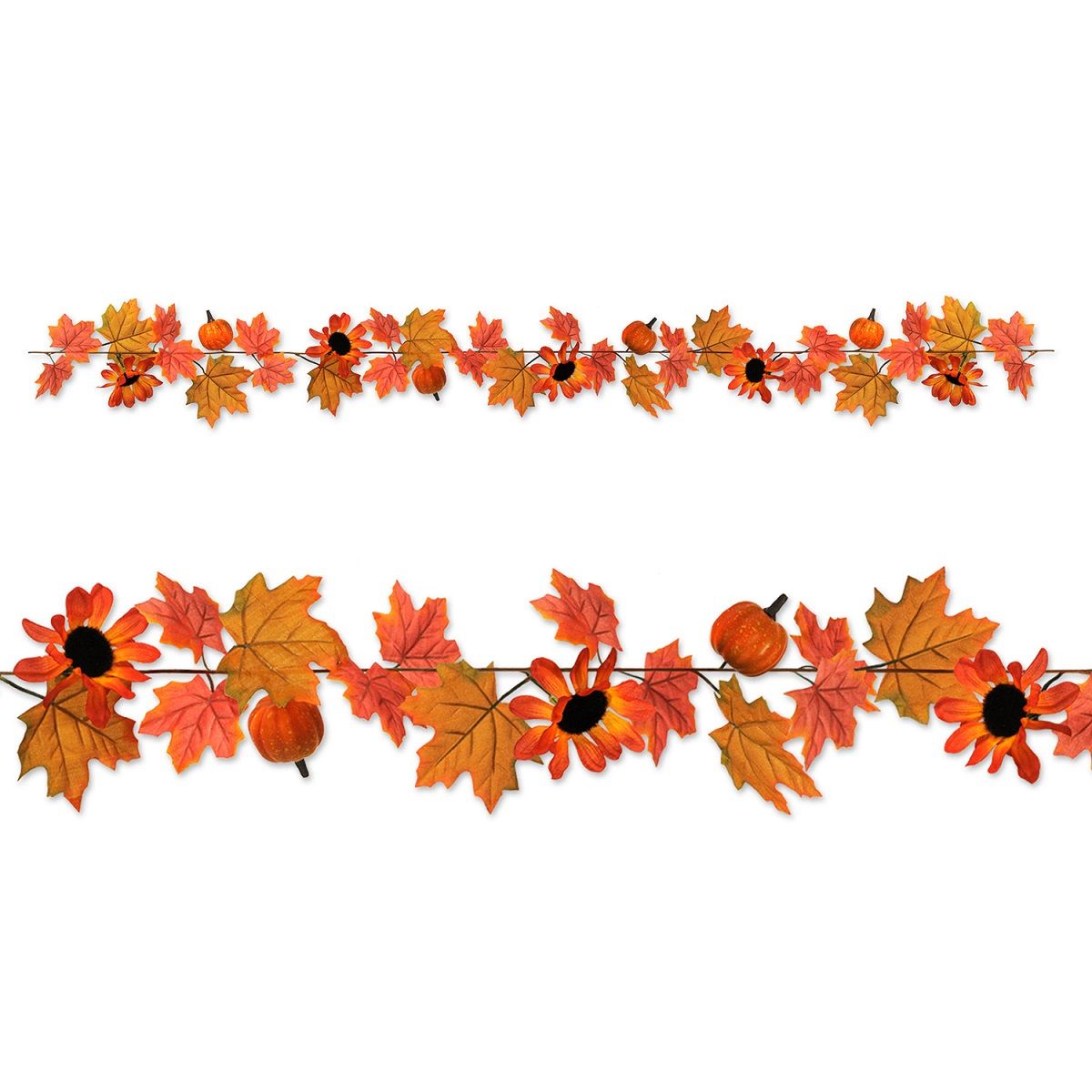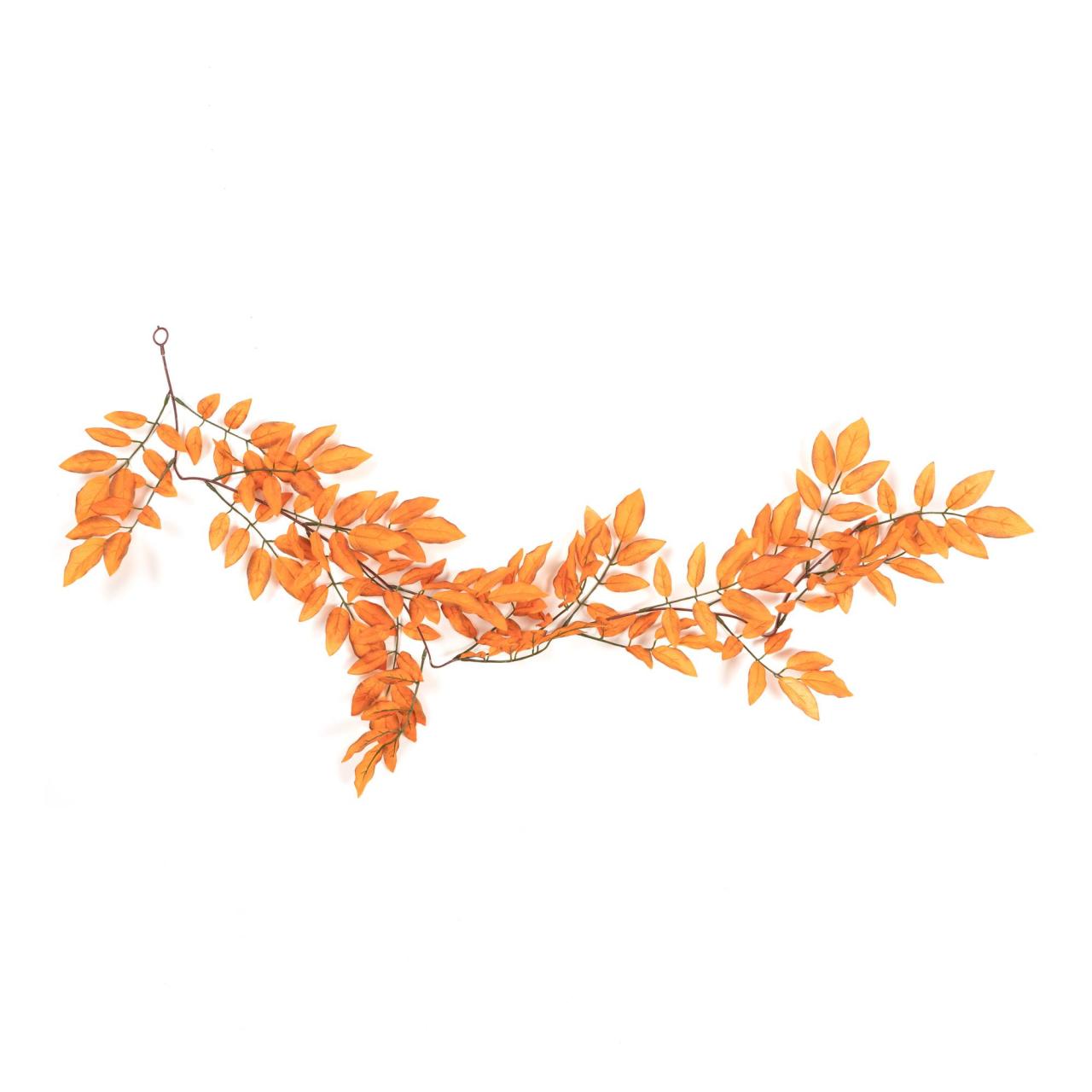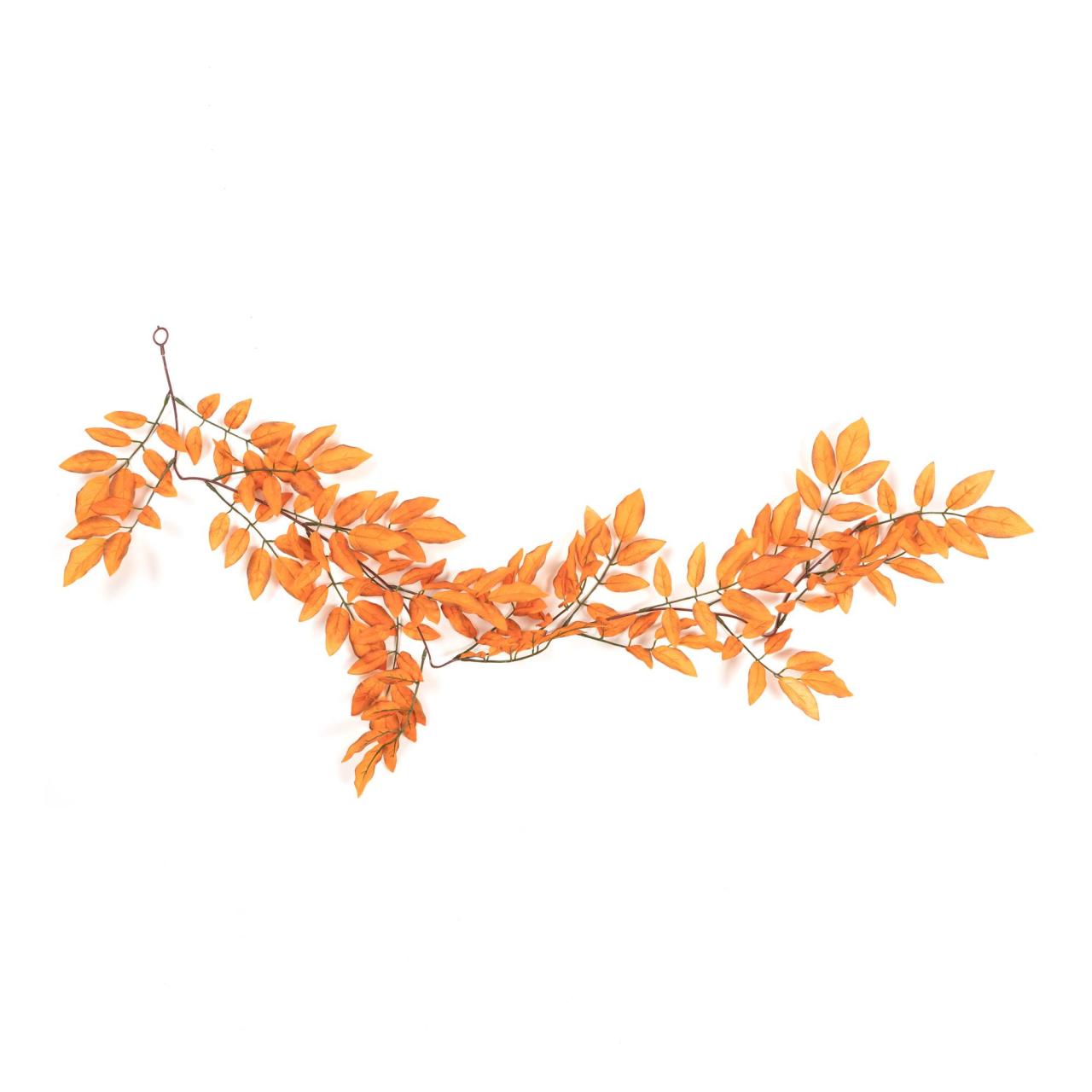How to Design a Stunning Autumn Leaf Garland: Essential Tips for a Cozy Fall Decor – Design a Stunning Autumn Leaf Garland: Essential Tips for a Cozy Fall Decor invites you to transform your home into a warm and welcoming haven this autumn. Imagine stepping into your home and being greeted by the enchanting aroma of cinnamon and the sight of vibrant autumn leaves adorning your walls.
This guide will lead you through the process of crafting a beautiful and unique leaf garland, adding a touch of rustic charm to your fall decor.
From selecting the perfect leaves to assembling them into a stunning display, we’ll cover all the essential steps to create a breathtaking garland that will be the centerpiece of your autumn festivities. Get ready to unleash your creativity and embrace the beauty of fall as we embark on this DIY journey together.
Gathering Your Materials
Creating a stunning autumn leaf garland requires a careful selection of materials, including leaves, tools, and even some optional extras. The right combination of elements will bring your fall decor vision to life.
Types of Leaves for Your Garland
The type of leaves you choose will greatly influence the look and feel of your garland. Consider factors such as texture, color, and durability when making your selection.
- Texture:Leaves with a variety of textures add visual interest to your garland. For example, you can combine smooth, glossy leaves like magnolia with rough, textured leaves like oak or maple.
- Color:Autumn leaves come in a wide range of colors, from vibrant reds and oranges to deep yellows and browns. Use this variety to create a colorful and eye-catching garland.
- Durability:Choose leaves that are sturdy and less prone to breaking or crumbling. Maple, oak, and magnolia leaves are known for their durability.
Essential Tools for Garland Creation
Having the right tools on hand will make creating your garland a smooth and enjoyable process. Here are some essential items to gather:
- Scissors:Sharp scissors are crucial for cutting leaves to the desired size and shape.
- Twine or String:Choose a twine or string that complements the color of your leaves and is strong enough to hold the garland together.
- Glue:A strong craft glue or hot glue gun will help secure leaves to the twine or string.
- Wire:Optional, but wire can be helpful for creating loops or securing leaves in place.
Sourcing Your Leaves
There are several ways to gather leaves for your garland:
- Gather from Your Yard:If you have a yard with trees, take advantage of the abundance of fallen leaves. Look for leaves that are fresh, vibrant, and free of damage.
- Purchase from a Craft Store:Craft stores offer a wide variety of artificial leaves in different colors, sizes, and textures. This option is ideal if you want to create a garland that lasts longer.
- Use Artificial Leaves:Artificial leaves provide a long-lasting alternative to real leaves. They are available in various styles and colors, allowing you to create a customized garland.
Preparing the Leaves

Once you’ve gathered your leaves, it’s time to prepare them for your garland. This step ensures that your leaves last longer and maintain their vibrancy.
Cleaning and Drying Leaves, How to Design a Stunning Autumn Leaf Garland: Essential Tips for a Cozy Fall Decor
Cleaning and drying leaves is crucial for preserving their color and shape.
- Pressing:This method is ideal for delicate leaves, such as ferns and wildflowers. Place the leaves between two sheets of absorbent paper, such as parchment paper or paper towels, and press them with a heavy object, like a book or a flat iron.
While you’re crafting your autumn leaf garland, consider incorporating some greenery for a touch of year-round vibrancy. For inspiration, explore the art of propagation, particularly with ivy, as detailed in this informative guide: Create an Ivy Jungle: Propagation Secrets You Need to Know.
This technique can add a lush element to your fall decor and provide a lasting touch of nature throughout the year.
This process can take several days to a week.
- Air Drying:This method is suitable for larger leaves, such as oak and maple leaves. Simply string the leaves together with a needle and thread, or hang them individually on a wire rack. Ensure the leaves are in a well-ventilated, dry area, away from direct sunlight.
This process takes about a week to 10 days.
- Microwave Drying:For faster drying, you can use a microwave. Place the leaves between two paper towels and microwave them on low power for 30-second intervals, checking frequently to prevent burning. This method can dry leaves in a few minutes.
Preserving Leaf Color and Shape
Preserving the color and shape of your leaves is essential for creating a stunning garland.
- Sealant:Applying a sealant, such as acrylic spray or varnish, helps to protect the leaves from fading and damage. This step is particularly important for leaves that have been air-dried or microwaved.
- Wax:You can also use a natural wax, such as beeswax or paraffin wax, to preserve the leaves. This method adds a beautiful shine and protects the leaves from moisture.
Adding Embellishments
Adding embellishments to your leaves can personalize your garland and make it even more stunning.
- Glitter:For a touch of sparkle, apply glitter glue or sprinkle glitter over the leaves.
- Paint:You can paint the leaves with acrylic paint or use stencils to create intricate designs.
- Fabric Scraps:Cut out shapes from fabric scraps and glue them onto the leaves to create unique embellishments.
Assembling the Garland

Now that you have your leaves prepped and ready to go, it’s time to assemble your stunning autumn leaf garland. There are many ways to bring your vision to life, so let’s explore some options and techniques to help you create a truly unique and eye-catching centerpiece.
Garland Styles
The style of your garland can dramatically impact its overall look and feel. Here’s a breakdown of some popular garland styles, along with examples to inspire your creativity:
Style |
Description |
Example |
|---|---|---|
Linear |
A classic, straightforward garland that runs in a straight line. |
A simple garland of maple leaves strung on twine, perfect for draping along a mantelpiece or windowsill. |
Circular |
A circular garland that creates a beautiful, symmetrical focal point. |
A wreath of vibrant oak leaves interwoven with cinnamon sticks, ideal for hanging on a door or above a fireplace. |
Cascading |
A flowing garland that drapes gracefully from a high point, creating a sense of movement and whimsy. |
A garland of assorted fall leaves and berries cascading from a chandelier, adding a touch of elegance to a dining room. |
Creating a Basic Garland
A basic garland is a great starting point for beginners, and it’s incredibly versatile. Here’s a step-by-step guide:
Materials:
- Twine or wire
- Prepared leaves
- Scissors
Instructions:
1. Cut a length of twine or wire
Start with a length that’s slightly longer than the desired length of your garland.
2. Attach the first leaf
Fold the leaf in half and thread the twine or wire through the fold. Secure the leaf with a knot or twist.
3. Add more leaves
Continue attaching leaves to the twine or wire, spacing them evenly. Experiment with different leaf arrangements and orientations for visual interest.
4. Secure the ends
Once you’ve added all your leaves, tie the ends of the twine or wire together to create a loop. You can also attach a ribbon or twine to the loop for hanging.
Adding Dimension and Interest
A simple garland is lovely, but adding dimension and interest can elevate it to a whole new level. Here are some creative ideas:
Incorporate other fall elements:
Berries
Add pops of color and texture with cranberries, holly berries, or rose hips.
Pinecones
Pinecones add a rustic charm and a natural touch. You can even paint them for a unique look.
Gourds
Miniature gourds or gourds cut into interesting shapes can add visual interest and dimension.
Twigs
Add a touch of natural beauty with twigs of varying lengths and textures.
Dried flowers
Dried flowers, such as hydrangeas or sunflowers, can add a touch of color and elegance.
Play with texture and color:
- Mix and match different leaf shapes and sizes.
- Use leaves in varying shades of red, orange, yellow, and brown.
- Add metallic accents with gold or copper spray paint.
Create a focal point:
- Cluster a few leaves together to create a focal point.
- Use a larger leaf or a decorative element, such as a pinecone or gourd, as a central piece.
Enhancing the Garland: How To Design A Stunning Autumn Leaf Garland: Essential Tips For A Cozy Fall Decor
You’ve assembled your stunning autumn leaf garland, but why stop there? Take your creation to the next level with these creative enhancements, transforming it into a captivating centerpiece for your fall decor.
Personalizing the Garland
Adding personal touches to your garland allows you to express your unique style and create a truly one-of-a-kind piece.
- Incorporate Lights:String fairy lights or LED lights throughout the garland for a warm and enchanting glow. Consider using copper wire lights for a rustic aesthetic or battery-operated lights for easy placement.
- Add Ribbons:Tie ribbons in various colors and patterns to the garland, adding texture and visual interest. Consider using burlap, velvet, or satin ribbons for a touch of elegance.
- Personalized Tags:Create custom tags with names, dates, or messages and attach them to the garland. This adds a personal touch and makes the garland a unique keepsake.
- Incorporate Natural Elements:Add sprigs of pine, berries, or other natural elements to the garland for a more rustic and organic feel.
Incorporating the Garland into Fall Decor
A beautifully crafted autumn leaf garland can serve as a focal point for your fall decor, adding warmth and charm to any space.
While crafting your autumn leaf garland, consider incorporating elements of nature beyond fallen leaves. For instance, you can weave in sprigs of ivy, which adds a touch of verdant beauty and a subtle hint of the season’s transition. To cultivate your own ivy for future crafting projects, you can easily propagate it using cuttings.
Start Growing Ivy in Every Corner! Here’s How to Propagate It provides a detailed guide on this process. Once your ivy thrives, you’ll have a sustainable source of greenery for future autumn leaf garlands and other decorative projects.
- Over the Fireplace:Drape the garland over the mantelpiece, creating a cozy and inviting ambiance.
- Across a Doorway:Hang the garland above a doorway to welcome guests with the spirit of fall.
- Along a Window:Place the garland along the windowsill, allowing the natural light to enhance its beauty.
- On a Table Centerpiece:Create a stunning centerpiece by placing the garland on a table, adding candles or other decorative elements.
Garland Hanging Methods
Choosing the right hanging method ensures your garland remains securely in place and complements your decor.
Method |
Pros |
Cons |
|---|---|---|
Hooks |
Easy to install and remove, versatile for different surfaces. |
May damage walls or surfaces if not used carefully. |
Nails |
Secure and long-lasting, ideal for heavier garlands. |
May require more effort to install and remove, potential for damage to walls. |
Tape |
Easy to use, no damage to surfaces. |
May not be suitable for heavier garlands or rough surfaces, potential for detachment. |
Final Conclusion

Creating an autumn leaf garland is a wonderful way to celebrate the beauty of fall and add a touch of warmth and charm to your home. By following these simple steps, you can create a unique and personalized garland that reflects your style and complements your fall decor.
Whether you choose to display it over your fireplace, a doorway, or a window, your stunning leaf garland will surely be a conversation starter and a cherished reminder of the season.
FAQ Corner
What types of leaves are best for making a garland?
Leaves with vibrant colors, interesting textures, and good durability are ideal for garlands. Consider maple, oak, and dogwood leaves.
How long will my leaf garland last?
Depending on the drying method and sealant used, a well-preserved leaf garland can last for several weeks to months.
Can I use artificial leaves for my garland?
Absolutely! Artificial leaves offer a long-lasting and versatile option for your garland.
What are some creative ways to personalize my garland?
Add lights, ribbons, personalized tags, or even incorporate other fall elements like berries, pinecones, or gourds.
